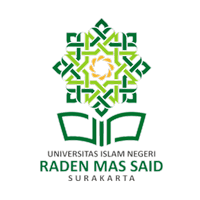Addas, C. (1993). Quest for the Red Sulphur: The Life of Ibn ’Arabi. Cambridge: The Islamic Texts Society.
Al-Farabi. (1986). Al-Madīnah al-Fāḍilah (A. N. N. Faris, Trans.). Beirut: Dar al-Mashreq.
Azra, A. (2004). The Origins of Islamic Reformism in Southeast Asia: Networks of Malay-Indonesian and Middle Eastern ‘Ulama’ in the Seventeenth and Eighteenth Centuries. Honolulu: University of Hawai‘i Press.
Behrend, T. E. (1999). Katalog Induk Naskah-naskah Nusantara Jilid 4: Perpustakaan Nasional RI. Jakarta: Yayasan Obor Indonesia.
Chittick, W. C. (1994). The Sufi Path of Knowledge: Ibn al-‘Arabi’s Metaphysics of Imagination. Albany: State University of New York Press.
Florida, N. K. (1993). Javanese Literature in Surakarta Manuscripts, Volume 1: Introduction and Manuscripts of the Keraton Surakarta. Ithaca: Cornell University Press.
Ibn Taymiyyah. (1995). Al-Radd ‘ala al-Akhnai. Cairo: Maktabah Dar al-Turath.
Jamaly, Z. (2024). Bulan Suro dalam Perspektif Islam dan Tradisi Bulan Suro di Pulau Jawa. Leksikon: Jurnal Pendidikan Bahasa, Sastra, & Budaya, 2(1), 7–15. https://ejurnal-unisap.ac.id/index.php/leksikon/article/view/194
Johns, A. H. (1961). The Gift Addressed to the Spirit of the Prophet. Melbourne: Melbourne University Press.
KGPAA Sri Mangkunegara IV. (2017). Serat Wedatama: Kajian Sastra Klasik (B. K. A. Marie, Trans.). Yogyakarta: Sempulur Publisher.
Mahamid, M. N. L., & Hidayatulloh, H. (2024). Exploring Wahdatul Wujud in Javanese Palace Manuscripts: A Comparative Study of Serat Menak and Serat Wedhatama. Jurnal Lektur Keagamaan, 22(1), 287–316. https://doi.org/10.31291/jlka.v22i1.1150
Massignon, L. (1994). The Passion of al-Hallaj: Mystic and Martyr of Islam (H. Mason, Trans.). Princeton: Princeton University Press.
Menocal, M. R. (2002). The Ornament of the World: How Muslims, Jews, and Christians Created a Culture of Tolerance in Medieval Spain. Boston: Little, Brown and Company.
Muaffan, M. (2021). Tasawuf dalam Pandangan Ibnu Taimiyah: Maqamat dan Ahwal. Putih: Jurnal Pengetahuan tentang Ilmu dan Hikmah, 6(1), 79–96. https://journal.mahadalyalfithrah.ac.id/index.php/PUTIH/article/view/10
Nasr, S. H. (2007). Islamic Spirituality: Foundations. New York: Routledge.
Neuman, W. L. (2014). Social Research Methods: Qualitative and Quantitative Approaches (7th ed.). Harlow: Pearson Education Limited.
Prasetyo, D. A. A. (2025). Makna Isbat dalam Manuskrip Syattariyah Merbabu sebagai Representasi Pendidikan Agama Seorang Individu. Piwulang: Jurnal Pendidikan Bahasa Jawa, 13(1), 110–126. https://doi.org/10.15294/1f5ys507
Putro, R. P., Rohmadi, M., Rakhmawati, A., & Saddhono, K. (2021). Religiusitas Islam dalam Serat Wedhatama Pupuh Gambuh. Jurnal SMaRT Studi Masyarakat, Religi dan Tradisi, 7(1), 71–100. https://journal.blasemarang.id/index.php/smart/article/view/1273
Simuh. (1988). Mistik Islam Kejawen Raden Ngabehi Ranggawarsita. Jakarta: UI Press.
Sunyoto, A. (2012). Atlas Wali Songo. Depok: Pustaka IIMaN.
Suseno, F. M. (1999). Etika Jawa: Sebuah Analisa Falsafi tentang Kebijaksanaan Hidup Jawa. Jakarta: Gramedia Pustaka Utama.
Tunjung, M. A., & Fauzi, F. (2023). Konsep Peace Education dalam Serat Wedhatama Perspektif Manajemen Pendidikan Islam. Edusaintek: Jurnal Pendidikan, Sains Dan Teknologi, 10(1), 234–241. https://doi.org/10.47668/edusaintek.v10i1.634
Wardhaugh, R., & Fuller, J. M. (2015). An Introduction to Sociolinguistics (7th ed.). Chichester: Wiley-Blackwell.
Woodward, M. R. (2011). Java, Indonesia and Islam. Cham: Springer.


